Moussaka Near You
- Delphi Greek Restaurant & Bar
 Closed$10.00 Delivery4.9
Closed$10.00 Delivery4.9
- Delphi Greek Restaurant & Bar
 Closed$10.00 Delivery4.9
Closed$10.00 Delivery4.9
Moussaka
- Post Corner Pizza
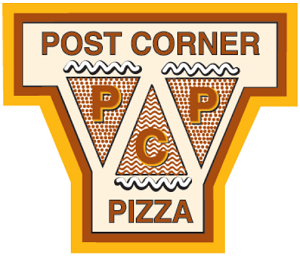 Open Now$3.00 Delivery5.0
Open Now$3.00 Delivery5.0 - Old Saybrook Pizza Palace & Restaurant
 Open Now$4.95 Delivery4.5
Open Now$4.95 Delivery4.5 - Mythos Greek & Italian Restaurant
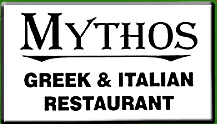 Open Now$6.90 Delivery4.5
Open Now$6.90 Delivery4.5 - Dino's Greek & Italian Grill
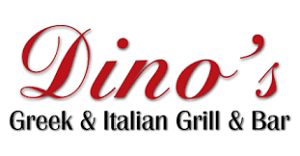 Open Now$6.90 Delivery4.8
Open Now$6.90 Delivery4.8 - Moustache Pitza
 Open NowFree Delivery4.9
Open NowFree Delivery4.9
- Post Corner Pizza
 Open Now$3.00 Delivery5.0
Open Now$3.00 Delivery5.0 - Old Saybrook Pizza Palace & Restaurant
 Open Now$4.95 Delivery4.5
Open Now$4.95 Delivery4.5 - Mythos Greek & Italian Restaurant
 Open Now$6.90 Delivery4.5
Open Now$6.90 Delivery4.5 - Dino's Greek & Italian Grill
 Open Now$6.90 Delivery4.8
Open Now$6.90 Delivery4.8 - Moustache Pitza
 Open NowFree Delivery4.9
Open NowFree Delivery4.9 - Nostimo Mediterranean Greek Restaurant
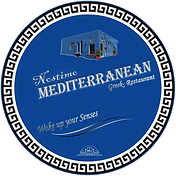 Open Now$4.95 Delivery4.9
Open Now$4.95 Delivery4.9 - State Street Grill
.png?auto=format&fit=max&q=10) Open Now$3.45 Delivery4.5
Open Now$3.45 Delivery4.5 - Joey Z's Brooklyn Pizza
 Open Now$3.50 Delivery4.7
Open Now$3.50 Delivery4.7 - RumorsOpen Now$4.95 Delivery4.9
- Elia Taverna
 Open Now$4.95 Delivery4.4
Open Now$4.95 Delivery4.4 - Manoli Canoli
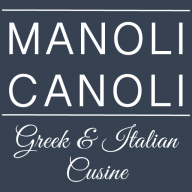 Open Now$4.95 Delivery4.5
Open Now$4.95 Delivery4.5 - Mozza Pizza & Rella GyroOpen Now$4.95 Delivery
- Paradise Diner
 Open Now$4.95 Delivery5.0
Open Now$4.95 Delivery5.0 - Chap's Grill
 Open Now$5.00 Delivery4.2
Open Now$5.00 Delivery4.2 - Blue Fig GardenOpen Now$4.95 Delivery4.6
Best Moussaka in New York
- Moustache Pitza
 Open NowFree Delivery4.9
Open NowFree Delivery4.9 - Big Arc Chicken
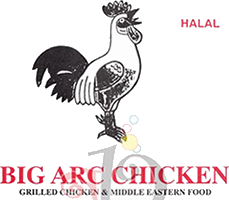 Open NowFree Delivery4.8
Open NowFree Delivery4.8
- Moustache Pitza
 Open NowFree Delivery4.9
Open NowFree Delivery4.9 - Big Arc Chicken
 Open NowFree Delivery4.8
Open NowFree Delivery4.8
What Is Moussaka?
Moussaka is a delicious dish made with eggplant and minced meat. It is quite popular in the Balkans and the Middle East. They even have different versions and sometimes potato is used instead of eggplant.
Still, it is the Greek moussaka that is most common here in the US, as well as in Europe. It consists of multiple layers and is usually served hot. Some people may even confuse it with lasagna, but the two are different.
So, if you'd like to try something new and interesting for your next lunch, moussaka is an excellent choice. As for more details on its history, variants, and preparation methods - just keep reading below.
Who invented the moussaka?
The name "moussaka" can be traced back to several countries and languages. This includes the Greek word "mousakás" but also the Arabic "muṣaqqa‘a" which means cold. Plus, the term circulated through the rest of the Balkan languages and Ottoman Turkish.
In English, the word "mùzàkkà" was first recorded in 1862.
On that note, it was the Arabs who had introduced the eggplant. And so, a dish predating moussaka was mentioned in the "Baghdad Cookery Book" circa the 13th century. This relates to the so-called "musakhkhan" which originated in the Levant.
That being said, the present-day Greek moussaka was invented in the 1920s by Nikolaos Tselementes. He was a famous Greek chef. His moussaka recipe called for three separate layers:
- Bottom layer - eggplant slices sauteed in olive oil.
- Middle layer - ground lamb cooked with tomatoes, garlic, and other spices.
- Top layer - bechamel sauce.
Once the different layers are cooked on their own, they're put together and baked as a whole.
While this is the definite version, there are also some alternative ones. Notably, Nikolaos presented a vegan option that excluded meat and dairy. And the ingredients used are vegetables, tomato sauce, and bread crumbs.
The Greeks have yet another type named "melitzanes, papoutsakia" or eggplant - little shoe style. What's different is the eggplants are whole and stuffed with minced meat.
What are some other moussaka variations?
As mentioned earlier, even though the Greek moussaka is the most prominent, other countries have their own variants.
In places like North Macedonia, Albania, and Serbia, the main ingredient is potatoes rather than eggplant. Of course, there is also meat, and they often top it with a mix of milk and eggs. And for a three-layer variant, a custard is used for the top one.
This version with custard on top was introduced by Elizabeth David in her "Mediterranean Cookery."
In Romania, additional ingredients can be cabbage, bread crumbs, tomato slices & cheese, as well as a tomato sauce.
The Levant moussaka is made with tomatoes, eggplant, and sometimes chickpeas. And in Egypt, they make it with fried eggplant, tomato sauce, and ground beef.
In contrast, the Turkish moussaka is not done with layers. It comes with fried eggplant slices and meat sauce but other ingredients such as carrots can be used, too.
How many calories are in moussaka?
The number of moussaka calories in a serving of 500 grams is around 550. This includes 35 g of total fat or 54% of the daily value based on a 2000-calorie diet.
Additionally, there are 24 g of protein and 37 g of total carbohydrates (12%). Plus, we got 830 mg of sodium (35%), 810 mg of potassium (23%), and 120 mg of cholesterol (40%).
Moreover, the amount of vitamin A is 23%, vitamin C 15%, and calcium 35%.
Where can I find moussaka near me?
Moussaka is a fantastic dish that you should definitely consider for your next meal. And we're here to help you find some near you.
Hence, for those of you in New York, we present you Moustache Pitza. They're located on Bedford Street and are open 7 days a week. You can give them a visit or order pickup or delivery through Slice. What's great is you even save 5% on any online order via the Slice app.
If you're in Seattle, Luciano's Pizza Pasta is the right place to get a delicious moussaka. You can find them on California Ave SW but they also offer takeout and delivery. They, too, are open 7 days a week and include a 5% discount for all online orders on Slice.
Browse More Dishes
EVEN MORE DISHES NEAR YOU
Tuna
•Pizza Puff
•Knish
•Italian Panini
•Steak Fries
•Carrot Cake
•Stuffed Pizza
•Steak Burrito
•Sundae
•Pineapple Pizza
•Fried Pickles
•Chocolate Brownie
•Pizza Lasagna
•Pie
•Anchovy Pizza
•Fried Shrimp
•Philly Steak Pizza
•Waffle
•Crab Cake Sandwich
•Meatloaf Sandwich
•Sauteed Spinach
•Angus Burger
•Veal Scallopini
•Egg Salad
•Eggplant Parmesan Sub
•Stuffed Shells
•Chicken Parmigiana Sandwich
•Steak Stromboli
•Blueberry Pancakes
•Piccata
•Shrimp Scampi Pizza
•Chicken Gyro Sandwich
•Potato Skins
•Sierra Mist
•Meatball Sub
•Buffalo Chicken Salad
•






